The Trunk Murders and ‘Sausage Ghost’ of 1920s New Orleans
A forgotten crime with all-too memorable details.
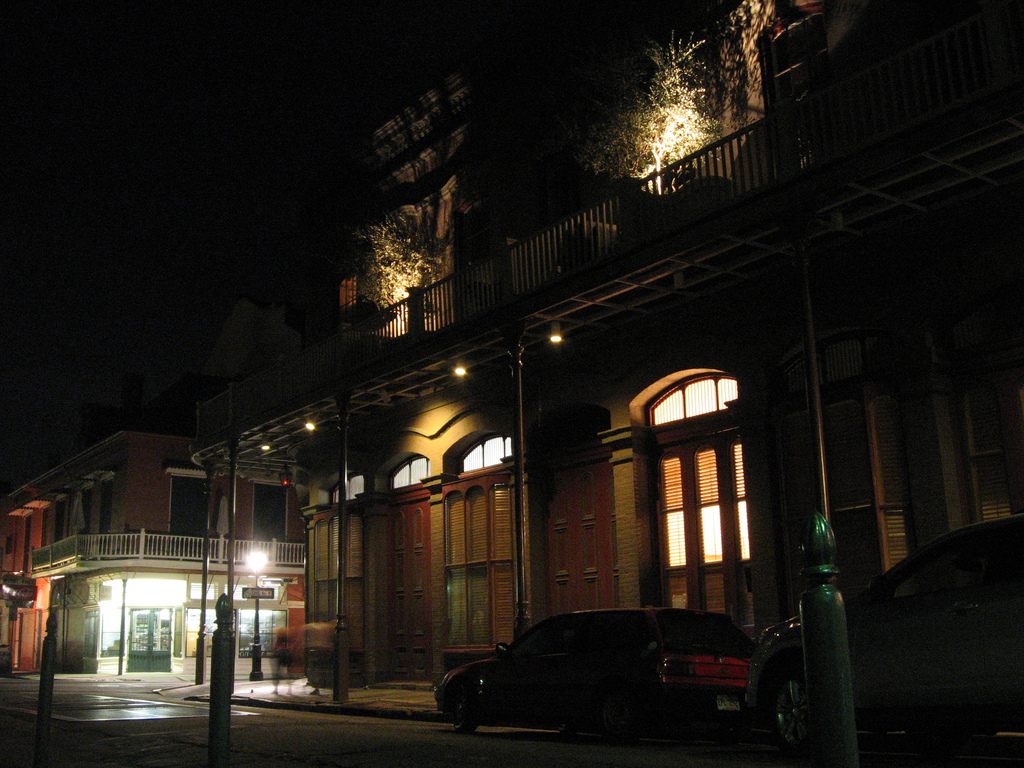
New Orleans’ French Quarter, at the corner of Ursuline Avenue and Royal Street. (Photo: Ken Lund/CC BY-SA 2.0)
Tucked between dog-eared title records and 19th-century floor plans were the dismembered corpses of two young flappers, expertly diced. Limbs eternally akimbo and packed into their respective trunks, they would dance the Charleston no more.
The grim Times-Picayune article from October 28, 1927 is filed into a binder at the Williams Research Center of New Orleans. Headlined “Bodies Found in Trunks,” it tells the ghastly end of Theresa and Leonide “Lonie” Moity. Their “Trunk Murders,” a forgotten chapter of the city’s lively history, involved clandestine streetcar flirtations, severed fingers, and the possible emergence of a “sausage ghost.”
In 1927, Theresa and Leonide shared a crowded existence with their husbands—brothers Henry and Joseph—and Theresa and Henry’s three small children in the second-floor rooms of 715 Ursulines Avenue. Before the women’s dispatch and disassembly, there were whispers of their “familiarity” with men other than their husbands.
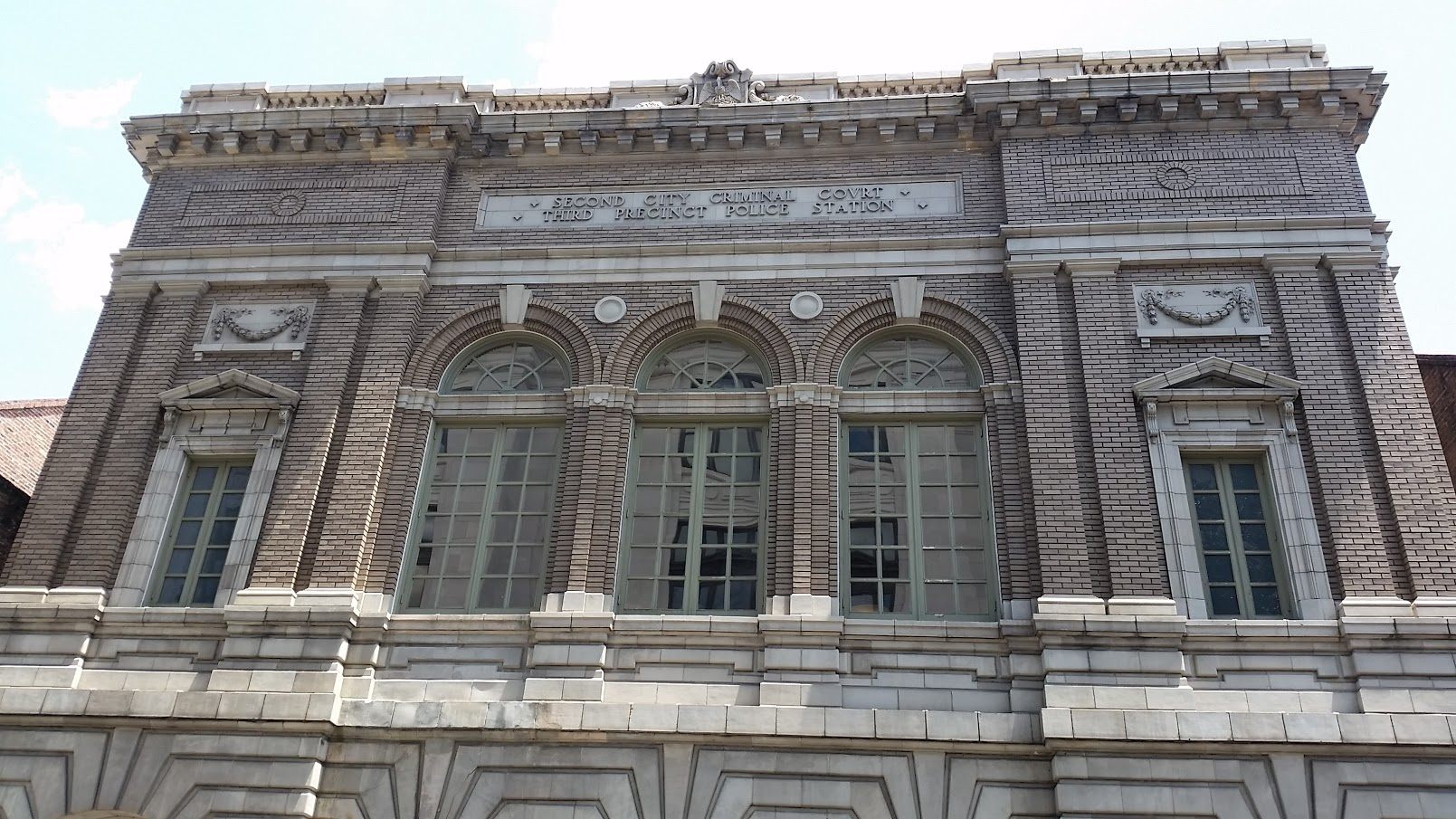
The Historic New Orleans Collection’s Williams Research Center. (Photo: Lauren George)
For their part, Henry and Joseph were odd-jobs men, described by sources as “shiftless” and perpetually short on the funds needed to support their families. Theresa and Leonide also worked, expressing frustration at having to manage their children while taking on sewing jobs to bring in necessary cash. After separating from her husband, Joseph, Leonide continued to live with Henry and Theresa, and Henry fretted over her influence on his wife.
In New Orleans of the 1920s, even people of modest means might afford domestic assistance. When housekeeper Nettie Compass arrived to clean the Moitys’ apartment on the morning of October 27, 1927, a scene of bloody disarray greeted her. The frantic cleaning lady was soon joined by two insurance men who were conveniently nearby and who, in turn, tipped off local reporter, George William Healy. In his 1976 memoir, Healy described their discovery:
We found red stains on the floor and saw a large trunk in a bedroom, partially open. When I pulled up the trunk lid, a woman’s body, arms, and legs severed from the torso, was exposed.
Healy borrowed a neighbor’s telephone, requesting a second reporter before suggesting that it “might” be appropriate to alert the coroner. When the coroner and Healy’s female colleague, Gwen, arrived,
she charged into the apartment and sighted several objects on a bed. “Look,” said Gwen, holding up these objects. “Lady fingers.” Four fingers had been cut from a woman’s hand … After placing the fingers back on the bed, Gwen moved to a second bedroom, found a second trunk, and opened it. It contained a second woman’s body.
Resting on the torso was a bloodied cane knife, of the type used on sugar plantations. The “lady fingers” were discovered to have belonged to Theresa Moity, whose missing wedding ring was later retrieved from a gaping wound in her back. A gold bracelet still hung delicately from the wrist of an arm, now unburdened of its owner. Clumps of hair lay on the floor, caught in the shadows cast from Ursulines Avenue.

The Times-Picayune from October 1927. (Photo: Times-Picayune)
Theresa and Leonide’s personal effects lay strewn among the gore: children’s clothing, unfinished sewing projects, the women’s lace garments, silk stockings, and beauty creams. In a turn worthy of pulp fiction, a manuscript written in Leonide’s hand was discovered hidden in the cabinet of her bedroom. Rife with grammatical errors, its thinly veiled autobiographical story cautioned young girls to “be careful, for marriage is a life sentence.” The rejection slip from her submission to a popular confessions magazine lay in a pool of her own blood.
As reporters and police took stock of the grisly tableau, there was one thing notably missing: Henry Moity. Henry had worked briefly as a butcher, and the Times-Picayune gleefully pointed out that “the manner in which the two bodies of the women were mutilated and dismembered indicated a man familiar with this trade.” Radio dispatches alerted departing steamer ships to be on the lookout for a stowaway passenger answering to Henry’s description: tattooed and, according to the newspaper, “singularly hairy.”
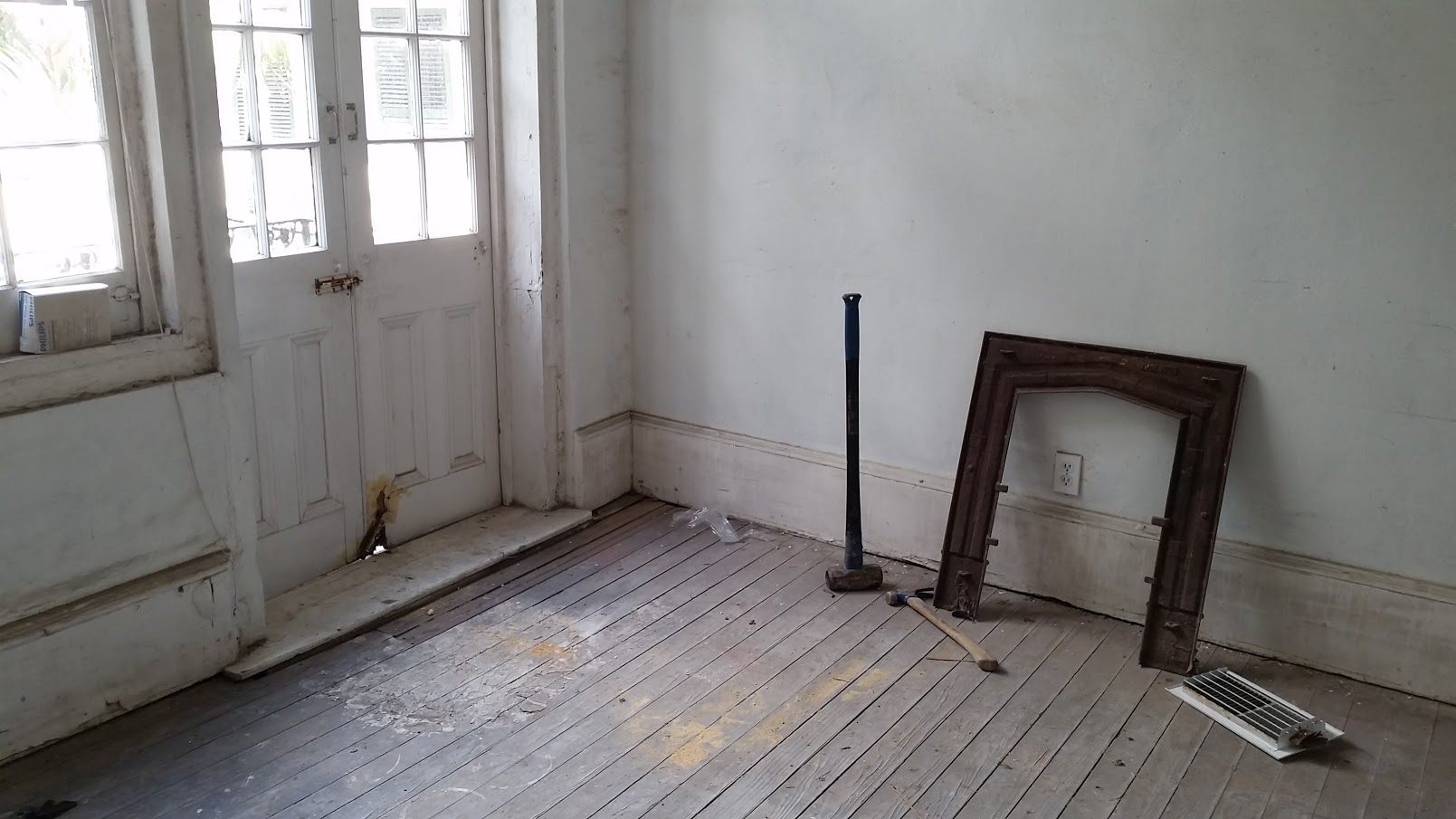
The room which shares a wall adjacent to crime scene. (Photo: Lauren George)
The ensuing manhunt led through swamps and shipboards before a bedraggled Henry was pulled from nearby Bayou Lafourche. At first he maintained that the murders had been the work of a redheaded Norwegian seafarer, whom he had been forced to assist. By Tuesday November 1, however—less than a week after the murders—Henry had made a full confession, abandoning his tale of the villain seaman.
From a New Orleans prison cell, Henry smoked, attempted to paint, and received curious visitors. He also divulged the details of his lurid crimes, and his furious jealousy of Theresa’s lover, Joseph Caruso. The married Caruso operated a real estate office from the ground floor of 715 Ursulines. From the time the Moitys moved in, Theresa and Caruso “were pretty thick,” Henry claimed in his confession to the District Attorney. The November 2, 1927 Times-Picayune repeated portions of this confession, in which Henry alleges that Theresa and Caruso took “friendly excursions on streetcars,” and carried out a brazen flirtation under his nose, stealing hugs and passing notes in the darker corners of 715 Ursulines.

The facade of 715 Ursulines Avenue by day. (Photo: Lauren George)
On Wednesday October 26, things had come to a head in the Moity household when Theresa and Leonide revealed their plans to move out. According to a 1957 letter from a Louisiana State Penitentiary prison warden, Theresa “is alleged to have flaunted a ten dollar bill in [Henry’s] face and bragged that she could make more in an hour (as a prostitute) then he could in a week.”
Later that day, Henry returned home to find Theresa and Leonide packing their belongings into two large trunks. An enraged Henry began drinking, interrupting his bender to purchase the murder weapon. When night fell over the quarter, the Moity women and children retired to their beds while Henry paced restlessly, drinking and contemplating the hidden cane knife. In his confession to the District Attorney, Henry admits that he considered killing himself and the children, but changed his mind when he imagined his wife “running around with Joe Caruso and the rest of them.”
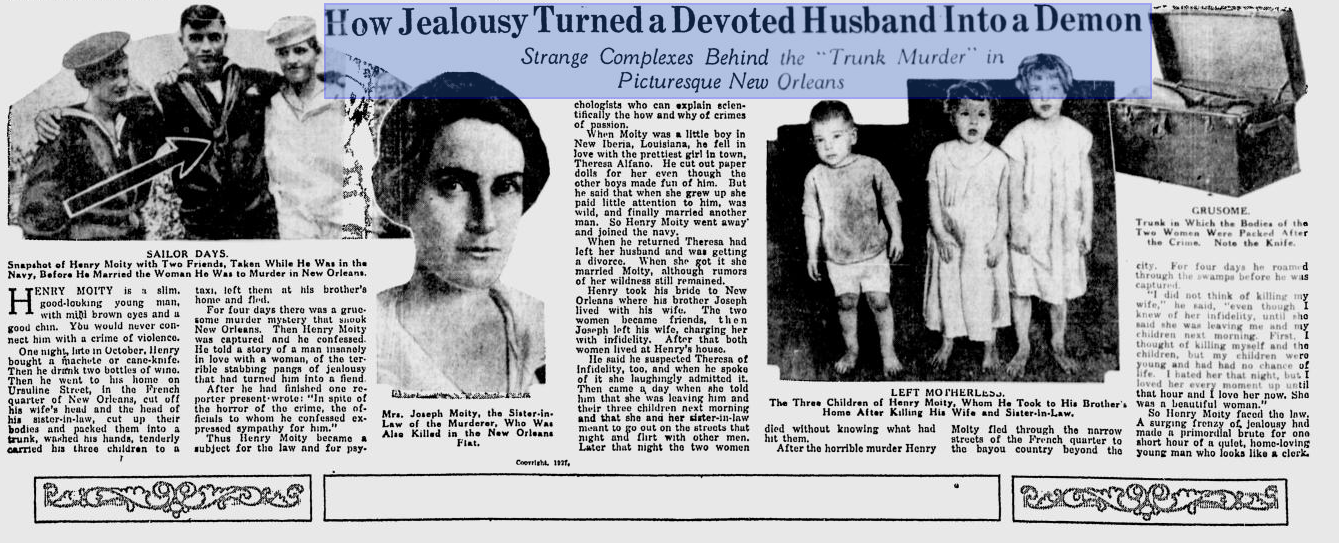
A newspaper report of the crime at 715 Ursulines Avenue. (Photo: Spokesman Review)
As he stood over the sleeping form of Theresa, studying the angles of the knife, he suddenly found himself swinging like a man possessed. As he later recounted to the DA, “She didn’t say a word or move. She just relaxed and the blood rushed.” Rushing into Leonide’s bedroom, he struck her as she tumbled from the bed where she had been sleeping. Afterward came the grim work of cutting up the bodies, as Henry stuffed the women into the trunks they had packed hours earlier. It wasn’t the departure they had anticipated.
In March 1928, Henry was convicted of Theresa’s murder and sentenced to life in prison.
Throughout his trial and imprisonment, he insisted that he still loved his wife, even claiming to be married in the 1940 US Census, years after her death. His 1941 appeal for a pardon was rejected by the governor and in 1944, he briefly escaped from the Louisiana State Penitentiary. Excepting his prison escape, the warden’s 1957 letter claimed that Henry was “one of the best prisoners we’ve ever had.” He continued to paint in prison, his portrait of Huey Long even making its way into the Baton Rouge governor’s mansion, where it hung for many years. In 1957, he died of a stroke in California’s Folsom Prison, where he is buried.
One of the most extraordinary aspects of the sensational “Trunk Murders” is how completely they have been forgotten. While tour guides repeat tales of New Orleans’s more famous criminals, they exclude the murders that the 1927 Times-Picayune proclaimed to be “the most brutal committed in New Orleans crime history.”
Though the legacy of Henry’s crime may persist in another local legend: the “Sausage Ghost.” Recounted in the 1945 Louisiana folklore collection, Gumbo Ya-Ya, the tale tells of a woman murdered by her butcher husband and turned into—you guessed it—sausages, to be sold to unsuspecting customers on Ursulines Avenue.
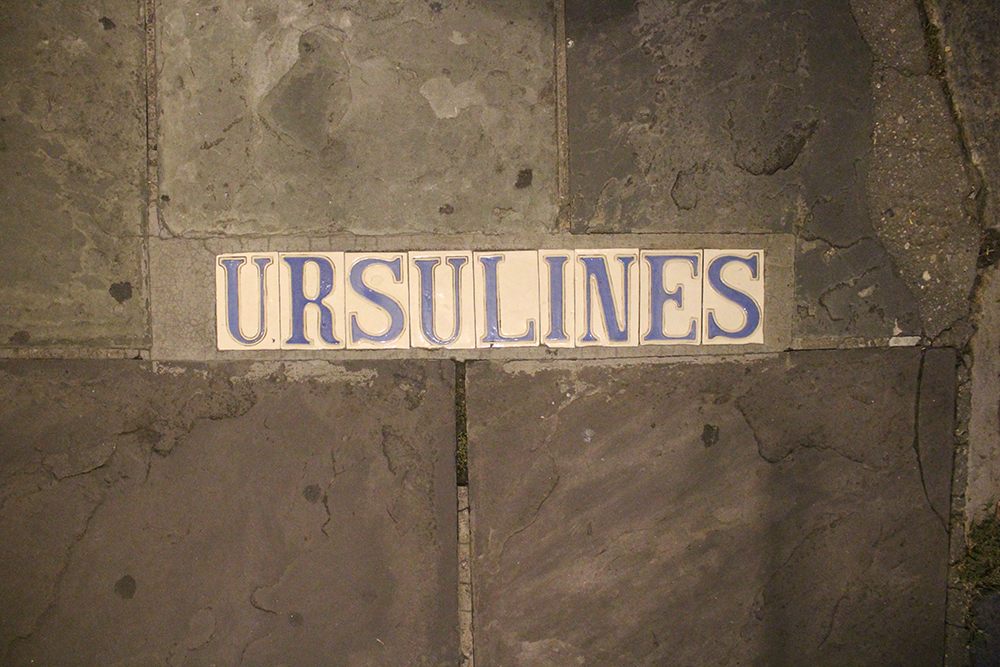
The “sausage ghost” legend also takes place on Ursulines Avenue. (Photo: Lauren George)
Is it possible that the Big Easy’s version of Sweeney Todd was born of the 1927 trunk murders, altered in retellings to more nightmarish proportions? Though details differ between the Sausage Ghost legend and the trunk murders case, Henry Moity’s November 2 proclamation through the bars of his prison to Times-Picayune reporters certainly nags the question: “If I ever get my hands on that Joe Caruso I’ll chop him up into little pieces, not big pieces like my wife, but little pieces—My God, I’ll make him look like something that’s been run through a sausage mill!”




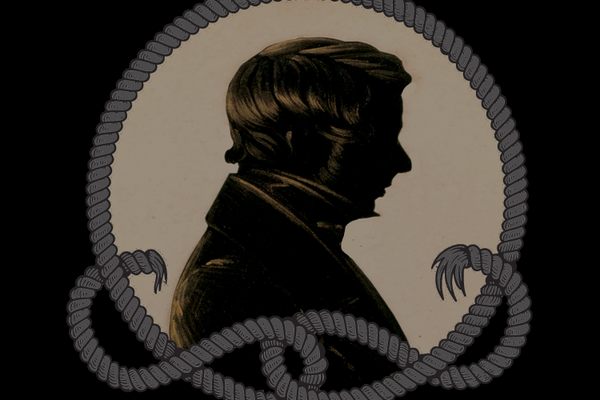












Follow us on Twitter to get the latest on the world's hidden wonders.
Like us on Facebook to get the latest on the world's hidden wonders.
Follow us on Twitter Like us on Facebook